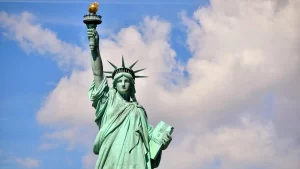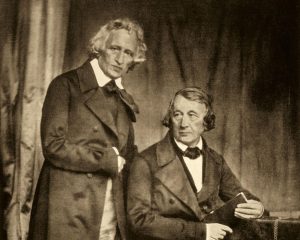Here, once again, is “something completely different” that I have culled from various emails and notes from friends and followers.
As I have done in previous Piñatas, in this third installment, I am sharing some of these epistles and dispatches with readers as a way for all of us to disengage from the steady stream of depressing news about inflation, soaring gas prices, our wide-open southern border, impending wars with Russia and China (let us hope not!), and the Washington swamp that overwhelms and engulfs us day after day.
So read on and enjoy.
First, some words of wisdom from one of my favorite senators, Sen. John Kennedy (not THAT John Kennedy!) of Louisiana. For those of you who may have been living in a cave and have never seen Sen. Kennedy, here are a few facts about him.
He has been the junior U.S. Senator from Louisiana since 2017. Until 2007 he was a Democrat but switched parties that year and became a Republican. He is a graduate of Vanderbilt University and the University of Virginia School of Law before attending Magdelen College at Oxford University. He is running for reelection to a second term in the November 2022 midterms.

So, when you hear all the “aw shucks” homespun humor that Kennedy loves to spout during his many TV interviews, just know that this is a very bright, erudite man who possesses a razor-sharp wit. But don’t take my word for it. Read on:
Here is some wisdom from the OTHER John Kennedy, Republican senator representing the great state of Louisiana, and here is what he believes:
- America was founded by geniuses but is now run by idiots.
- You can’t fix stupid, but you can vote them out of office
- When was the last time you heard of anyone trying to sneak into China?
- America is so great that people who hate it refuse to leave it.
- Let me say something about the Biden administration… so far the Biden administration sucks. .
- I don’t like to brag about the expensive places I’ve been to, but this morning I went to the gas station.
- Exercise makes you look better naked… but so does alcohol.
- Welfare should be a bridge… not a parking lot.
- Weakness invites the wolves.
- We must arm for peace.
- We don’t have a gun control problem, we have an idiot control problem.
- Free advice, friends… if the government tells you not to buy a gun, buy two.
- if you hate police officers, the next time you are in trouble, call a crack-head.
- Here’s a free tip… cops will leave you alone if you don’t do stupid things.
- We need an election day, not an election month.
- You should be able to prove who you say you are when you vote.
- 400,000 bodies buried at Arlington National Cemetery is the reason you should stand for the National Anthem.
- The water won’t clear till you get the pigs out of the creek.
- Love is the answer, but you should own a gun… just in case.
As usual, everything Sen. Kennedy says makes sense–at least it does to me, and I’ll bet it does to you too!
******************************
Here are Five Things You Might Not Know About the Statue of Liberty
Not many monuments truly deserve to be called iconic, but the Statue of Liberty has become a symbol of New York — and of America itself. Whether it’s the details of her origins in the mid-19th-century or her more recent renovations, there’s plenty to learn about this much-revered monument to freedom.

- She Wasn’t a Gift From the French Government
The Statue of Liberty is often touted as a gift from France to the United States. However, the French government contributed nothing to its construction. The idea for the monument was initially proposed in 1865 by the French writer and politician Édouard de Laboulaye, whose motivations were multi-pronged. An abolitionist who was inspired by the end of the Civil War and slavery in the U.S., de Laboulaye wanted to create a monument to freedom and justice that would also inspire the people of France. The statue was also meant to celebrate the centennial of American independence, and the U.S. alliance with France during the Revolutionary War.
In 1875, Laboulaye became the president of a civic group called the Franco-American Union, which determined that the French citizenry would pay for the statue itself while the Americans would pay for the base. Fundraising began immediately, with France raising its share of the needed funds by 1880. The finished statue was exhibited in Paris in 1884, where a deed was signed to bequeath it to the people of the United States. Unfortunately, once the statue had been disassembled and shipped to New York Harbor in 1885, it became clear that the Americans had not yet raised enough funds to build the pedestal.

Enter newspaper magnate Joseph Pulitzer to the rescue. Pulitzer publicized the project and solicited donations, writing in his paper The New York World, “It is not a gift from the millionaires of France to the millionaires of America, but a gift of the whole people of France to the whole people of America.” Within six months, the World had collected more than $100,000 in donations, much of it in amounts of $1 or less. On October 28, 1886, President Grover Cleveland presided at the inauguration of the finished statue and pedestal.
- Her Full Name Is “Liberty enlightening the World”
Though she’s often known simply as Lady Liberty, the monument’s official name is “Liberty Enlightening the World,” or La Liberté éclairant le monde in French. Some say the seven spikes on her crown are meant to symbolize the seven seas and seven continents, but that fact is debated by historians (the spikes may just be meant as sun rays).
- She’s Based on a Roman Goddess
The Romans worshipped liberty as a deity. Their goddess of freedom was named Libertas, and she had her own temple in Rome as far back as 238 B.C.E. Often shown as a woman in a flowing robe, this image of Libertas was one of the inspirations for the Statue of Liberty’s design. The goddess was no newcomer to American iconography, however: She’s featured on the New York State flag, as well.
- An Important Date Is Inscribed on Her Tablet
Visitors to the statue’s crown may be able to see “JULY IV MDCCLXXVI” inscribed on the tablet in her left hand. This date — July 4, 1776 — refers to the day the United States adopted the Declaration of Independence, a move that inspired many French citizens.

While the date is the only item inscribed on the statue itself, there’s an important plaque mounted inside the pedestal. This plaque contains the text of the poem “The New Colossus” by Emma Lazarus. The iconic lines — especially “Give me your tired, your poor, your huddled masses yearning to breathe free” — have become widely associated with the Statue of Liberty’s invitation to immigrants from all over the world.
- She Received a Face-Lift for Her Centennial Anniversary Celebration

For the 100th anniversary of the statue in 1986, Lady Liberty received some much-needed renovations. Workers repaired holes in the copper skin and replaced its rusting armature bars with stainless steel ones. But the statue’s torch received the most pronounced upgrade: It was completely replaced by a 24-karat gold-plated replica. The original, which was made of copper and weighs 3,600 pounds, is now on display in the Statue of Liberty Museum on Liberty Island.
***********************
Ten things That Require Zero Talent, But Will Take You Far in Life
- Being on time
- A good work ethic
- Effort
- Energy
- Body language
- Passion
- Diligence
- Being prepared
- Being coachable
- Attitude
******************************
The Brothers Grimm Didn’t Create Their Own Fairy Tales
The cultural impact of the Brothers Grimm fairy tales, originally published in 1812 as “Kinder- und Hausmärchen,” or “Nursery and Household Tales,” is hard to overstate. Two centuries after its publication, the tales have been the creative backbone for hundreds (perhaps thousands) of films, TV shows, plays, and works of art — whether as direct adaptations or loose inspirations.

But although you’re probably familiar with stories like “Little Red Riding Hood,” “Rumplestiltskin,” and “Sleeping Beauty,” you may not know that German linguists Jacob and Wilhelm Grimm didn’t actually create the narratives themselves. Instead, they compiled tales that had been passed down through the oral tradition, some for perhaps thousands of years. The two brothers began interviewing family and friends to collect the tales while they were still teenagers studying at the University of Marburg. After publishing their first collection of 86 tales, the brothers delivered a second edition three years later with an additional 70 tales. The seventh and final edition in 1857 featured 211 tales.
In the Brothers Grimm’s “Cinderella,” the fairy godmother character is a tree.
While almost everyone is familiar with the fairy godmother in Disney’s “Cinderella,” she never appears in the Grimms’ version. Instead, she is replaced by a tree that’s been planted on Cinderella’s mother’s grave. Many cultures around the world have some version of the Cinderella story.
Originally, the stories weren’t meant for children — many were violent, sexual, or otherwise R-rated. Instead, the Grimms intended for the tales to be an excavation of cultural heritage, and they first introduced them as scholarly work. But as literacy rates climbed in the 19th century, subsequent editions edited out a lot of the original tales’ brutality in order to appeal to wider audiences, especially children.
Today, many kids become acquainted with the Grimms’ fairy tales through Walt Disney, who used the tales as far back as 1922 for some of his earliest animations. But Disney is far from the only one inspired by the Grimms — more recently, their work has provided the narrative fuel for Stephen Sondheim’s musical Into the Woods, Shelley Duvall’s Faerie Tale Theatre TV series, 2020’s fantasy-horror film Gretel & Hansel, and NBC’s aptly named television show Grimm, to name just a few folklore-filled examples.
********************************
And to end, a little story about driving and fatherly wisdom:
Driving Test Aftermath
A teenage boy had just passed his driving test and asked his dad if he could start using the family car on a regular basis.
The Dad said he’d make a deal with his son, “You bring your grades up from a C to a B average, study your Bible a little, and get your hair cut. Then we’ll talk about the car”
The boy thought about that for a moment, decided he’d settle for the offer and they agreed on it.
After about six weeks, the Dad said, “Son, you’ve brought your grades up and I’ve observed that you have been studying your Bible, but I’m disappointed you haven’t had your hair cut.”
The boy said, “You know, Dad, I’ve been thinking about that, and I’ve noticed in my studies of the Bible that Samson had long hair, John the Baptist had long hair, Moses had long hair, and there’s even strong evidence that Jesus had long hair.”
His Dad replied, “Did you also notice that wherever they went they all walked?”


Ron, playing six-degrees-of-separation, we can connect the Statue of Liberty to Vietnam. The steel framework inside Lady Liberty was designed by French engineer Gustave Eiffel (most famous for the Eiffel Tower). Eiffel also designed the Trường Tiền Bridge in Huế city.